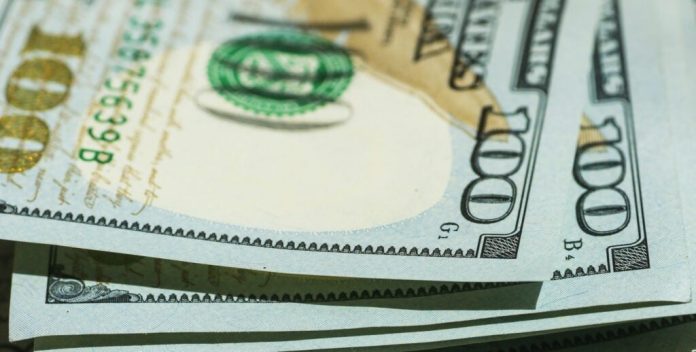The April Consumer Price Index (CPI) report came out Wednesday morning, and the results aren’t quite as encouraging as those hoping for interest rates to drop this year would like.
The Federal Reserve’s target of inflation levels below 2% still seems far off, with the overall inflation rate ticking up by 0.3% in April. The rate has slowed down after rising 0.4% in the last two months, but it’s doubtful that the drop of 0.1% will convince the Fed that inflation is decreasing as fast as it should be. The year-on-year inflation rate as of April is still 3.4% before seasonal adjustment.
The employment market is showing no signs of slowing down, either. The latest data from the U.S. Bureau of Labor Statistics shows that employment numbers continue to grow, and unemployment figures are nearly the same as in March. Nonfarm payroll employment grew by 175,000, and the unemployment rate was 3.9%, which means it has stayed within the same range since August 2023 (3.7%-3.9%).
These two key economic indicators of inflation and employment figures point to economic conditions that may thwart the hopes for a relaxation of the Fed’s anti-inflation measures.
CPI Report Key Facts
As in March, inflation in April was predominantly driven by the rising indexes for shelter and energy. The two parameters combined accounted for 70% of the month-on-month increase in the all-items index.
The energy index alone showed an increase of 1.1%. This figure was driven primarily by ongoing increases in gas prices, which rose by 2.8% in April, or 5.2% before seasonal adjustment. The energy index is showing a year-on-year increase of 2.6%.
By contrast, items like food showed much less inflationary activity; the food at home index declined by 0.2%.
The Rise and Continued Rise of the Shelter Index
Fed economists are typically less concerned by inflationary indicators for food and energy because those tend to be more volatile. They watch closely the “core” CPI sections, which are the index’s all-items core minus food and energy.
As of April, the core CPI year-on-year inflation rate, excluding food and energy, was 3.6%.
The shelter index is the one segment of the all-items index that warrants special attention.
In April, the shelter index accounted for the largest inflationary increase for all items, excluding food and energy. The shelter index rose 0.4% overall; the rent index and owners’ equivalent rent (OER) indices increased at the same month-on-month rate of 0.4%. Year over year, the shelter index increased 5.5% and accounted for two-thirds of the total annual all-item increase, less food and energy.
Shelter is a key component of the core services part of the inflationary index. It is closely monitored by the Fed because it’s one of the most reliable indicators of how the domestic economy is performing. The OER indicator alone—the amount of rent that would need to be paid to substitute a currently owned home as a rental—accounts for a third of the CPI, which makes it a very significant number. As of April, all indicators point to a housing economy that is still growing—and growth is driven by the rental market.
And even if the shelter segment is excluded from the core services part of the CPI, we’re still seeing increases in key areas like motor vehicle insurance (a 1.8% month-on-month increase) and transportation services (a 0.9% increase).
So Will the Fed Cut Rates?
The numbers unequivocally indicate inflationary rates that are still higher than they need to be for the Fed to achieve its inflationary target rate of below 2%. All the areas that the Fed is particularly focused on—namely, the core services sections of the economy—are continuing to grow.
The good news is that the CPI isn’t showing any alarming inflationary spikes. This has allowed the Fed to remain cautiously optimistic about the economy’s overall direction and the much-anticipated possibility of rate cuts. On Tuesday, Fed Chair Jerome H. Powell told the Foreign Bankers’ Association that he expected “that inflation will move back down on a monthly basis to levels that were more like the lower readings we were having last year.”
At the same time, Powell admitted that his confidence was “not as high as it was,” and that the inflationary readings “were higher than I think anybody expected.” His overall message was that high interest rates were here to stay for now, saying: “[We’ll] need to be patient and let restrictive policy do its work.”
There is much speculation that the Fed will begin to cut interest rates in the summer or early fall, in time for the presidential election. The central bank also prefers months of reliable data before acting.
Right now, predicting a rate cut definitively is unwise, Mary Daly of the San Francisco Fed said on the Macro Musings podcast, adding: “There’s considerable, now, uncertainty about what the next few months of inflation will be and what we should do in response.”
As far as inflation and rate cuts go, we’re very much where we were a month ago: in wait-and-see territory.
On the Market Podcast
Learn from Dave Meyer and his expert panel about the trends, data, and headlines shifting today’s economy so you can invest and build wealth with confidence.
Note By BiggerPockets: These are opinions written by the author and do not necessarily represent the opinions of BiggerPockets.



